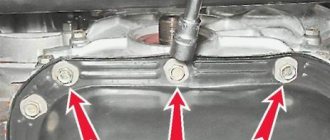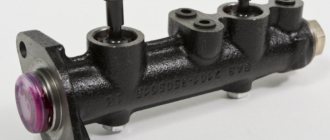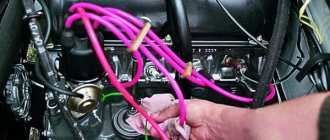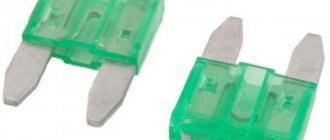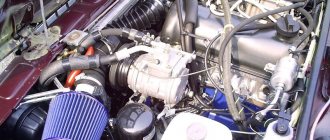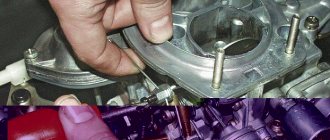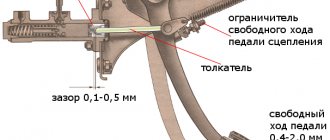The most common type is gasoline cars, which require full maintenance. Usually a simple part like spark plugs doesn't raise many questions. However, the unit requires more attention than most motorists think. The stability of the engine and the service life of the ignition system depend on the correct choice.
In 2022, there are a large number of models and companies on the market that, in their opinion, produce the best spark plugs for VAZ and other car models. But it is not always the case.
Selection options
To select good SZ, you must be guided by the following criteria:
- The first parameter to consider when purchasing is the heat rating. It should be noted that this parameter is conditional and not universal, so it must be selected in accordance with the model of a particular motor. This number shows the pressure level in the internal combustion engine cylinder at which glow ignition occurs. The use of SZ with a higher heat number is allowed, but is not prohibited if it is lower.
- Another parameter is the possibility of self-cleaning. Unfortunately, this parameter can only be accurately verified in practice, since all SZ manufacturers promise consumers a high level of self-cleaning. If this indicator is really high, then carbon deposits will not form on the SZ, which is especially important for their optimal operation.
- When buying spark plugs from a VAZ, you also need to take into account their gap. Each manufacturer sets the appropriate gap for individual product lines. If we are talking about domestically produced cars, then in this case this gap on the VAZ spark plugs should be 0.5-0.7 mm.
- Traditional SZ are equipped with two electrodes - one central and one side, but not so long ago global manufacturers began producing devices with 3 and 4 electrodes. These electrodes cannot produce multiple sparks - their purpose is to provide more consistent sparking. Accordingly, the use of such SZ contributes to more stable operation of the power unit due to improved ignition procedures.
- Before purchasing SZ, carefully inspect them for mechanical damage. If you see that there are cracks on the device’s body, then it is better to refuse to purchase such SZ. Also, before installation, check that the gap is the correct size.
- To diagnose purchased SZ, you can install them in a pressure chamber, of course, if you have such an opportunity, then adjust the pressure in it to about 10 kg/cm2, and the current should be connected with a value of 22 kV. As a result, a spark should begin to form. If the spark appears intermittently, this indicates that the SZ is not working, but if the sparking is continuous, then the devices can be purchased (the author of the video is Nail Poroshin).
Types of ignition systems
The very first is the contact system, which was used on the VAZ 21074 of the first production. Its basis is a mechanical ignition distributor (distributor). A spark is formed when the contact group in the distributor body is closed; conversion to high voltage is carried out using a coil, which is a step-up transformer. And only after the spark is distributed by the distributor does it appear on the VAZ spark plugs. This system is obsolete, because the presence of contacts significantly reduces the service life due to their frequent burning.
Bosch is famous for its quality products
The non-contact ignition system is considered more progressive, which began to be used on the VAZ 21074 towards the end of the last century, when the carburetor was replaced by an injector, reliable and durable. The same distributor, only instead of a contact group there is a Hall sensor, which reacts to the passage of a cylindrical metal plate with slots near it.
The system is controlled using a switch, which amplifies the signal coming from the Hall sensor and supplies it to a high-voltage coil. From the coil, through a distributor with a slider, a much stronger spark is supplied to the spark plugs, so if the electrodes break down, it is necessary to replace the spark plug on the VAZ 2107 with a new one.
TOP best manufacturers of spark plugs for VAZ
So which SZ for VAZ is better to choose?
Below is a list of the most popular device manufacturers:
- ZAZS. VAZ vehicles are equipped with such SZ during production. The manufacturer recommends using ZAZS, citing the fact that these spark plugs are most optimal for domestic engines. However, many car enthusiasts do not trust this manufacturer and install SZ from other brands on their cars.
- Beru. In particular, we are talking about the 14FR-7DU model. The main feature of such SZ is the use of a copper central electrode in the design, which has a nickel shell. Thanks to this, the SZ of this model is more resistant to corrosion and wear. The skirt is made in a conical shape, thanks to which the device quickly switches to self-cleaning mode. In addition, the spark power in these fire protection systems is quite high; accordingly, the combustible mixture will burn most efficiently.
- Champion, namely the RC9YC model. If you believe the manufacturer, then such SZ have lower performance in terms of gasoline consumption. In addition, they are more stable, and their power when operating at higher engine speeds is higher.
- NGK is one of the brands that supplies the highest quality products to the domestic market. The nickel model BCPR6ES-11 is currently considered one of the most affordable options. A power unit with such devices will operate more steadily. And when the driver presses the gas pedal, the engine can operate 4% more powerful than with traditional SZ. Separately, we should highlight the iridium spark plugs on the VAZ. If you decide to purchase iridium spark plugs at VAZ, you will be faced with a large assortment of models. They differ from each other both in cost and in characteristics. It should be noted that iridium spark plugs on VAZ have a longer service life. Depending on the model, iridium spark plugs on a VAZ can last up to 100 thousand kilometers or even more. Of course, such advantages also affect the cost of SZ as a whole. Iridium spark plugs on VAZ have an iridium electrode, which makes the spark even more powerful.
- Denso Q20TT. Such devices have a thinner electrode, for the manufacture of which precious metals are not used. Accordingly, this has a positive effect on the price of SZ. As practice shows, when using such devices, the engine power will be higher, its dynamics will increase, and fuel consumption can be reduced. Of course, we are talking about a normally running engine.
- Czech-made devices Brisk DR15YC are equipped with a copper core, as well as a longer electrode insulator, thanks to which the SZ can more quickly switch to self-cleaning mode. Accordingly, the use of these models is more relevant for vehicles that are used in urban environments. As for the replacement interval, in this case it largely depends on the quality of the fuel.
- Bosch FR7DCU. Such SZ are equipped with a copper core mounted to a chromium-nickel shell. Accordingly, this enables the electrode to be more resistant to erosion or corrosion. Thanks to the use of nickel plating, the likelihood of thread sticking is minimized.
- Finwhale F516. The body of this model is characterized by galvanic coating and is made of ductile steel. In addition, this model has good electrical insulation, as a result of which heat conductivity will be higher, which is ensured by the high content of aluminum oxide on the insulator.
Spark plug malfunctions and their diagnosis
The main parameter is the gap between the spark plug electrodes, so you need to know what gap is acceptable for your engine. This parameter varies depending on whether an injector or carburetor is used in the power system. In addition, the manufacturer sets its own standards regarding the use of spark plugs in various types of engines. Usually the gap lies in the range of 0.5-1 mm and if it differs from the norm, then it must be adjusted.
We removed the carburetor from a VAZ 2107, went through the entire fuel system, but the engine still doesn’t run? Oddly enough, the symptoms of ignition problems are very similar to malfunctions in the fuel system. You can even blame the injector and its pump installed in the tank if the engine does not pick up speed. And the reason will not be in the pump at all, but in the high-voltage wires, which dried out over time, and the current leakage increased significantly.
Video “Checking the gap on new SZ”
A specialist in the video (author - Nail Poroshin) will tell you more about what a modern VAZ owner needs to know about diagnosing the gap on the SZ.
We will select NGK spark plugs (Japan-France) for carburetor and injection engines of “classic” VAZ cars (2101, 2102, 2103, 2104, 2105, 2106, 2107) with contact and non-contact ignition systems. The list below is far from complete, but includes the most common and most frequently used NGK spark plugs on “classics”.
General requirements for spark plugs for carburetor and injection engines VAZ 2101-2107
— Heat number — 17
— Length of the threaded part — 19 mm
— The heat cone protrudes beyond the spark plug insulator
— The gap between the electrodes is 0.7-0.8 mm (contact and non-contact ignition systems, carburetor engine), 0.9-1.1 mm (injection engine)
— Availability of an interference suppression resistor for spark plugs for engines with contactless ignition systems and injection engines
— Hexagon (nut) — 21 mm
Selection of NGK spark plugs for “classics”
Contact ignition system
BP6ES code 7811 (standard)
BP6ES V-LINE No. 4 code 5637 (with a v-shaped cutout on the central electrode)
BPR6EIX code 6637 (with resistor and iridium center electrode)
BUR6ET V-LINE No. 1 code 2876 (with resistor, three-electrode, with a v-shaped cutout on the central electrode)
Contactless ignition system
BPR6ES code 7822 (standard with resistor)
BPR6ES V-LINE No. 2 code 2268 (with resistor and v-shaped cutout on the central electrode)
BPR6EIX code 6637 (with resistor and iridium center electrode)
BUR6ET V-LINE No. 1 code 2876 (with resistor, three-electrode, with a v-shaped cutout on the central electrode)
BPR6ES-11 code 4824 (standard with resistor)
BPR6ES-11 V-LINE No. 13 code 5339 (with resistor and v-shaped cutout on the central electrode)
BPR6EIX-11 code 3903 (with resistor and iridium central electrode)
BUR6ET V-LINE No. 1 code 2876 (with resistor, three-electrode, with a v-shaped cutout on the central electrode)
Notes and additions
— Spark plugs for a contact ignition system, with some exceptions, are not recommended for installation on engines with a contactless system or fuel injection, but vice versa is possible.
— The “classic” injection engines discussed in the article are 2104 and 21067.
— You can select spark plugs produced by NGK on their website (page www.ngk.de/nc/ru/podbor-produkcii/)
More articles on spark plugs for VAZ cars
For the proper operation of a gasoline engine, the condition and quality of the spark plugs play a decisive role. For example, an unstable spark will cause misfires, which will not only give themselves away by shaking at low speeds and driving under tension, but will also lead to the combustible mixture getting into the catalyst - and this is the risk of its overheating and failure. It is not for nothing that, starting with Euro 3 econorms, the injection ECU programs of domestic cars provide for diagnosing uneven crankshaft rotation and shutting off the fuel supply to faulty cylinders.
USEFUL INFORMATION / carburetor / spark plugs / modification | Topic started by: Putnam
Useful information for car owners.
Vladimir (Mair) ABOUT THE IGNITION SYSTEM
Malfunctions of the ignition system affect all modes of engine operation.
When checking it, special attention should be paid to spark plug gaps, ignition timing, cleanliness of high-voltage wires, condition of the ignition coil and distributor connector, serviceability of vacuum and centrifugal regulators.
ABOUT THE CARBURETOR - how to clean it properly.
You need to wash the outside of the carburetor without disassembling it. Particular attention must be paid to the cleanliness of moving joints, damper axes, levers and rods. To wash the chambers and channels, it is recommended to completely disassemble the carburetor. During partial disassembly, dirt from the external surfaces may get inside the carburetor. To do this, use kerosene or special washing liquids and a brush with moderately stiff bristles. You can wash individual carburetor parts with acetone. Gaskets, diaphragms and rubber seals are not solvent resistant. These parts must be removed and washed separately and only in gasoline.
If there are old deposits in the carburetor channels, its body parts can be immersed in detergent compounds for several hours. To completely remove deposits, all channels after flushing must be blown with compressed air under high pressure (6-8 bar).
It is not recommended to wipe carburetor parts and cavities with a lint cloth. Even the smallest fibers separated from it fall into the channels and jets, which can lead to subsequent adhesion of dirt to them, reducing their throughput or clogging. Read it, like it!
Vladimir (Mair) Adjustments on "SOLEX"
Vladimir (Mair) Adjustments to “OZONE” Click, view all images and they will be in full screen!
Vladimir (Mair) HOW TO DIAGNOSTIC ENGINE OPERATION ACCORDING TO THE CONDITION OF THE PLUGS
Spark plugs, these simple-looking compounds of metal and ceramic, are the most important element in the operation of an engine. Even by the appearance of the spark plug, you can tell a lot about both the operation of the engine as a whole and its individual components.
Inspection of the spark plug should be carried out after prolonged operation of the engine; the ideal option would be to inspect the spark plug after a long trip on a country highway. The mistake of some car enthusiasts, for example, is that after a cold start of the engine at sub-zero temperatures and its unstable operation, the first thing they do is unscrew the spark plugs and when they see black carbon deposits, they draw hasty conclusions. But this carbon deposit could form during engine operation in cold start mode, when the mixture is forcibly enriched, and unstable operation could be a consequence of, say, the poor condition of high-voltage wires. Therefore, I would like to emphasize once again, if you are not satisfied with something in the engine’s operation, and you decide to diagnose its operation using spark plugs, you need to drive at least 250-300 kilometers on initially clean spark plugs, or better yet, even more, and only after that draw some conclusions .
Design features of spark plugs
A seemingly simple detail has many nuances. Let's list the main ones:
- The heat value characterizes the rate of heat transfer from the electrodes to the spark plug skirt. During operation, the spark plug must be heated to such a temperature that the carbon deposits on it oxidize without having time to build up, but overheating is also dangerous for it: glow ignition may occur, and the electrodes themselves will begin to rapidly deteriorate. The problem is that the heat load on the spark plug itself is uneven - when driving at low speeds, the heating is much less than when driving with the pedal to the floor. Candles with a standard heat rating in both of these cases will operate at the extreme point of the optimal mode - under- and overheat, respectively.
- The spark gap depends primarily on the power of the standard ignition system and the maximum pressure in the cylinder at the end of the compression stroke: it must be such as to ensure reliable spark breakdown even at low voltage in the network (cranking with a starter on a dead battery). And the difference in this case is obvious: usually the transformation coefficient of the ignition coils is about 2000, that is, when the generator is running, they can produce up to 28 kilovolts, but when starting up - only 14! Consequently, the purchased set of spark plugs must have exactly the same gap as set by the car manufacturer: an increased one means the risk of misfire (but within the capabilities of the coil it will provide a more powerful spark that ignites the mixture better), a reduced one guarantees the possibility of starting with a dead battery, but is fraught with interruptions already from - to reduce spark energy.
- The sticking out of the electrodes also means a lot for the performance of the spark plug in a particular engine. For example, on eight-valve engines, where the spark plug is located on the side of the combustion chamber, increasing the offset optimizes the ignition of the mixture: the area adjacent to the walls of the combustion chamber is less ventilated, while moving the electrodes further ensures that there will be a high-quality, easily ignitable mixture in the spark gap. For VAZ eight-valve engines, where the ventilation of the combustion chamber is structurally deteriorated (the intake and exhaust channels are located in the same direction, and not opposite each other), this is quite sensitive. Spark plugs with electrodes recessed inside are used, as a rule, on multi-valve engines with a minimum volume of the combustion chamber, otherwise they may collide with the valves or piston.
- The number of electrodes in real operation is fundamentally small. Multi-electrode spark plugs theoretically have an increased service life - when erosion destroys one of the side electrodes, a spark begins to strike the other (unlike a common misconception, a spark does not occur simultaneously between several electrodes). In practice, the spark usually “floats” (which is why it seems that there are several of them) - under conditions of poor distribution of the mixture throughout the cylinder, the spark can move from the working area to the “shaded” area, that is, contaminated with residual exhaust gases. As a result, instead of improving the service life, we will get a deterioration in engine performance, which, again, is fundamental for the VAZ eight-valve engine, which already idles disgustingly with the lean mixture prescribed by current economic standards.
Reasons for replacing elements
The spark plug in any car must function in difficult conditions, solving the following problems:
- promptly ignite the air-fuel mixture compressed in the cylinder;
- provide an even and powerful spark discharge on its contacts;
- sparking should not deteriorate under any engine operating mode.
For ignorant car enthusiasts, checking spark plugs comes down to a “spark” test. This gives rise to an erroneous statement: if, when connected to a source, a spark jumps between the contacts, then the element is in good working order.
But the conditions inside the combustion chamber differ from normal atmospheric ones, since there is high pressure (over 10 Bar), and instead of air there is fuel plus high temperature. Often, a spark plug that produces a reliable spark discharge in air, in the cylinder, works with misfires or does not spark at all.
The operability of the elements can only be determined on a stand with high voltage applied and pressure created in the chamber. Such a check is not available to most ordinary motorists; the only way out is to promptly replace the VAZ 2106 spark plugs by purchasing high-quality products from well-known manufacturers. These include famous brands NGK, Bosch, Beru and Brisk.
Russian spark plugs of the A17 series cannot boast of a long service life and fail after 15-20 thousand kilometers, as evidenced by the following signs:
- The engine "troits". Moreover, sometimes it is impossible to understand which cylinder is failing, since all 4 spark plugs skip ignition cycles.
- The car performs poorly and is unstable until it warms up.
- With high fuel consumption, a drop in power is observed.
- A particularly bad case is when the oil pressure light comes on. This is the result of long-term driving on bad spark plugs, when the fuel that does not burn in the cylinders flows into the crankcase and dilutes the oil, causing its pressure to drop.
Every car enthusiast should remember that if the power unit malfunctions, the first step is to unscrew the spark plugs and visually check their condition.
The color and thickness of carbon deposits on the contacts can tell a lot to an understanding motorist:
- black carbon deposits on the contacts indicate that the fuel in the chamber does not burn completely, perhaps the spark plug has failed;
- a white coating on the electrodes indicates a poor air-fuel mixture, the spark plug is working;
- red carbon deposits indicate that the fuel contains harmful additives; the spark plug is most likely in good working order;
- thick “fluffy” carbon deposits are the result of combustion of oil entering the chamber through the seals or piston group.
Noble metals: practical meaning of application
As we already said in the last paragraph, the transition to a multi-electrode circuit did not bring much practical benefit in increasing the service life of spark plugs. In fact, the fight against the very cause of natural wear of spark plugs, that is, erosion of contacts, was replaced with a palliative - the substitution of “spare” ones. To increase the immediate reliability of the electrodes, the design of the spark plugs was significantly redesigned.
In “platinum” and “iridium” spark plugs, the main feature that catches the eye is a very thin central electrode, which precisely localizes the point of origin of the spark - opposite it, a plaque of the corresponding metal is soldered on the side electrode, and the central electrode is also covered with it.
The advantages of such candles are obvious: the electrodes have a service life that, under normal conditions, is two to three times longer than that of conventional candles. The thin central electrode is perfectly self-cleaning, which also contributes to reliable operation.
The disadvantages, alas, are also significant. The first is the price: a set with the Platinum or Iridium inscription will cost at least two to three times more than regular candles. The second, oddly enough, is tenderness: non-fading carbon deposits instantly kill such candles, and mechanical cleaning is contraindicated for them, just like the old-fashioned burning with a torch. First of all, we are, of course, talking about the notorious ferrocene, which is still not uncommon to encounter.
Recommendations for replacement intervals
According to official recommendations, replacement of spark plugs is required every 30 thousand km. In real conditions, low fuel quality causes consumables to fail by 12-15 thousand km. The need for replacement can be determined by the following symptoms:
- there is a missing spark;
- During the inspection, black spark plugs with irremovable carbon deposits were found;
- Any damage shown in the image below has been identified.
Damage to spark plugs
Non-traditional schemes
Some of the design solutions in spark plugs of an unconventional design can be called conditionally working - by improving one thing, they worsen another. The simplest example is the NGK V-Line series of spark plugs: their central electrode has a groove, so the spark always jumps between the edge of the electrode and the side one. In theory, this improves ignition of the mixture by moving the spark into a better ventilated space and stabilizing the spark point, but the erosion of such a central electrode is accelerated.
Some of the candles on the market cannot be classified as anything other than “Herbalife” from the car market: all sorts of “pre-chamber”, “torch” and so on candles, at best, work no better than standard ones, at worst, they quickly deteriorate. For example, in the notorious “Bugaets” candles, the soldered skirt not only worsened the ventilation of the spark gap, but also burned out, and sometimes went into “free flight” into the combustion chamber. Of the designs that are workable, but useless in the practice of an ordinary motorist, we note only spark plugs that do not have a side electrode at all - they were originally created to work in ultra-high boost engines in order to avoid overheating of the protruding side electrodes; in a normal city cycle on a “civilian” boost level motor, they They clean themselves disgustingly and guarantee rough idling even on ideal quality gasoline.
Choosing spark plugs for VAZ
Let's talk about spark plugs using a specific example - the 16-valve VAZ-2110 engine, which is equipped from the factory with A17DVRM spark plugs from the Engels plant. The same plant, by the way, produces original spark plugs for other Russian conveyors: the “EZ” marking can be seen on Renault Original spark plugs, for example. For convenience, we will focus on these candles.
EZ A17DVRM
The main advantage of these spark plugs is the consistency of quality: it is difficult to find large differences in resistance or spark gap size in the original set. It’s not for nothing that we mentioned the word “original” - alas, the market is flooded with either fakes or rejects going on sale. The spark plugs have a good reserve of stopping sparking; with a standard ignition system, they can withstand cranking when the voltage drops to 6V without stopping sparking. They operate stably even at maximum load conditions - misfires, which can be “caught” by a sensitive gas analyzer, are minimal.
As for the resource, they answer their task - to work from maintenance to maintenance - with confidence. Considering their low price and prevalence, they are clearly worthy of recommendation.
EZ T17DVRM
Three-electrode version of the already familiar A17DVRM. The theoretical gain in resource also brought its own disadvantage: the parameters of the spark plugs “float” more, and this is, first of all, an unstable gap, hence some deterioration in motor characteristics. But it should be noted that this deterioration can only be “caught” on a measuring stand; in real operation, it cannot be said that three-electrode spark plugs from Engels will be worse than single-electrode spark plugs.
Denso W20EPR-U11
Excellent candles from one of the world leaders in their production: high and stable manufacturing quality, reliable operation in any mode and a good service life. The spark plugs confidently withstand voltage drops at startup down to 6.5 V (unexpectedly losing to domestic ones!), and misfires with them are minimal.
Their design uses the same solution as the NGK V-Line series, but exactly the opposite: the groove is stamped into the side electrode. This is definitely more profitable in terms of production, since there is no need to strictly orient the side electrode relative to the central one, but there is obviously less practical benefit from such a design.
Brisk LR15YCY-1
Plugs with an increased reach of the central electrode, as expected, did not show an increase in motor performance on a 16-valve engine: this solution would be more “workable” on an eight-valve engine. By all indicators, this is a strong “middle peasant”, but the price is significantly higher than that of competitors with the same qualities. Let us only note the good result for starting on a dead battery: 6.2V is an excellent result... but the original spark plugs from Engels are cheaper and, oddly enough, better than the Czech ones.
NGK BPR6ES-11
The company's marketers clearly made a mistake in classifying these spark plugs as the V-Line series: their central electrode does not have a groove. Let’s say right away: the original kit is a strong “average” product that doesn’t stand out in any way, but doesn’t fail the tests either. I definitely don’t like the noticeable roughness of the workmanship - even the Made in France marking is always printed unevenly, and the side electrode is usually soldered unevenly. One gets the impression that the manufacturing technology was deliberately cruder for the sake of low cost, but these candles could have been better.
The main disadvantage of NGK is not themselves, but the monstrous number of fakes on the market. Just type “spark plug” in a search on Ebay or AliExpress without specifying the brand, and a multi-page list of “NGK type” from China will immediately appear.
Bosch WR7DPX
We will leave these candles out of the rating, given how much more expensive the Platinum series is than its counterparts that do not contain precious metals. However, it is these spark plugs that demonstrate the best results in all motor tests - this is primarily due to the thin central electrode, completely hidden in the insulator: the engine starts when the voltage in the on-board network drops below 6V, which is not available to other plugs, minimal toxicity clearly indicates the smallest amount of misfires.
You will have to try to overheat the central electrode at maximum loads - the design guarantees reliable heat transfer from it to the insulator and then to the skirt. This means that this spark plug can be recommended to both owners of traveling cars and lovers of aggressive driving. Unless, of course, the price stops it.
see also
Pouring candles when cold
- 5 0 6k
Replacing spark plugs on a Z18XE engine
- 8 0 3k
Spark plug and coil lubricant
- 66 3 86k
How to check spark plugs
- 72 4 99k
No spark
- 98 7 221k
VAZ 2106, 2107, 2108 and 2109 cars are very similar to each other in their design and engines. However, they were produced with both an injector and a carburetor, so when choosing spark plugs you need to focus on the fuel system and ignition option (contact or non-contact). The manufacturer of original spark plugs for all of the above cars is the Russian company “E3”, Engels.
According to the rating of spark plugs for the VAZ 2106 on PartReview dated 05/07/20, owners prefer NGK products. Manufacturers BRISK, Denso and Finwhale also stand out.

